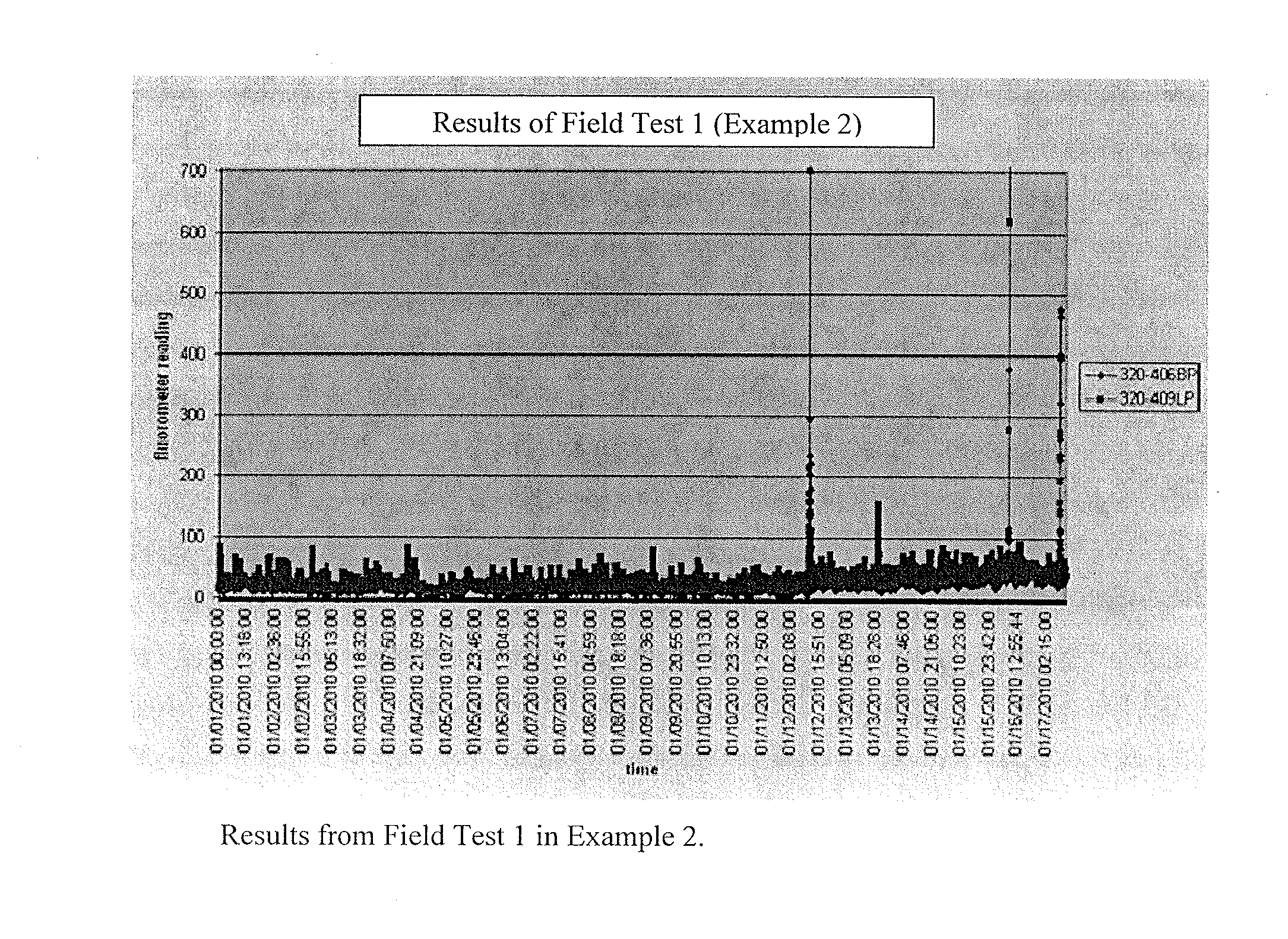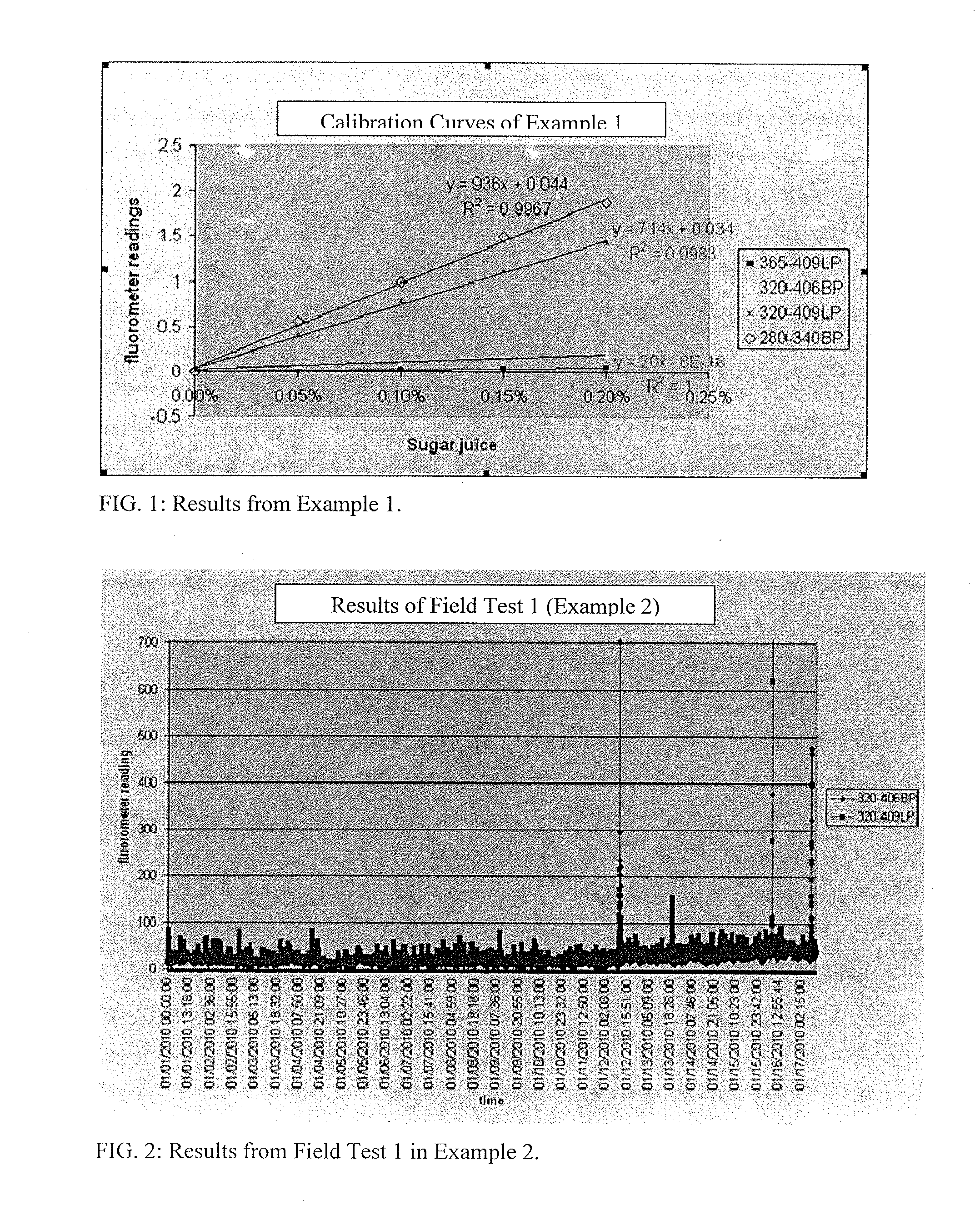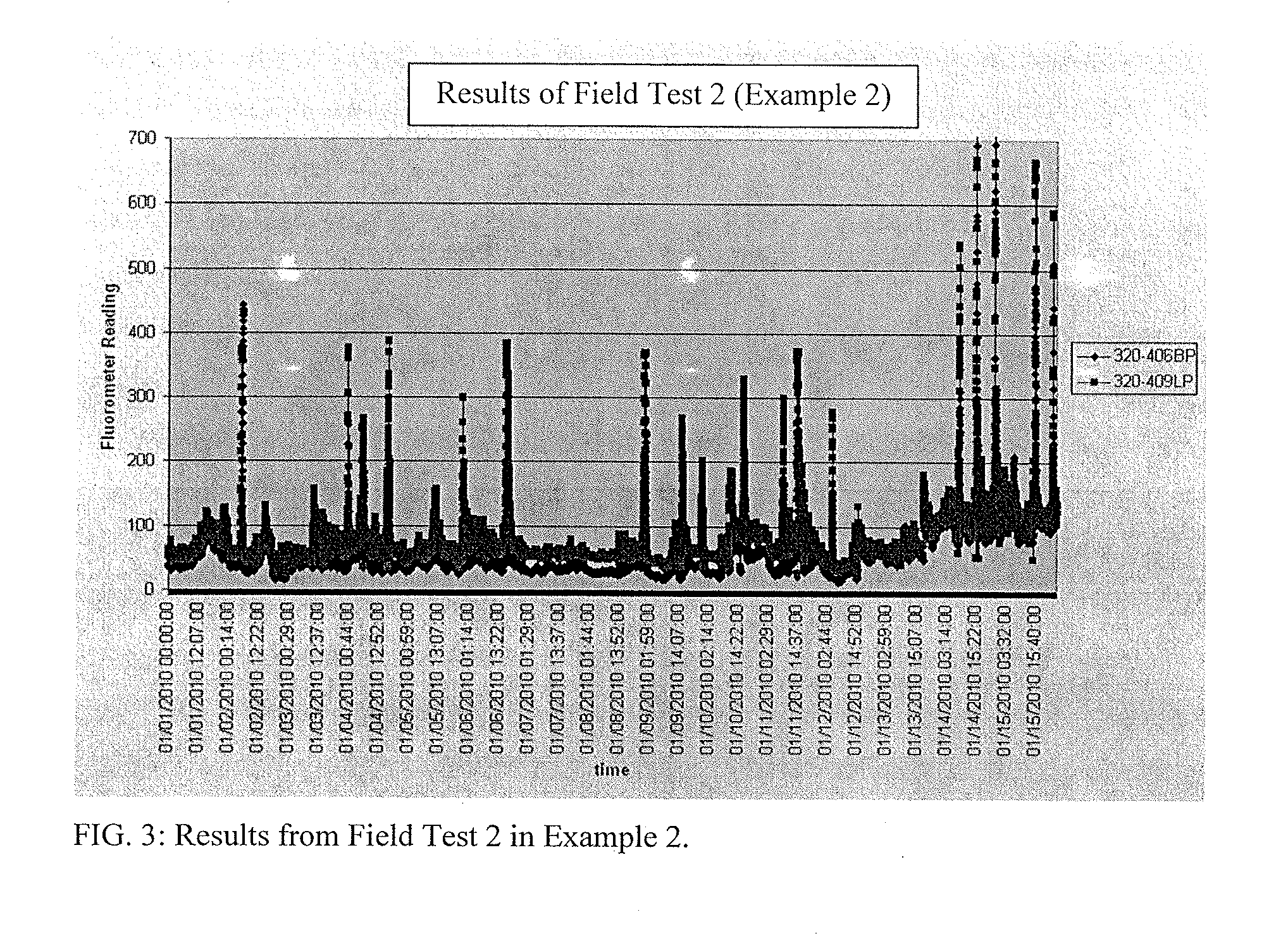On-line detection of organic contaminant in condensate system of sugar production processes using fluorescence thechnology
- Summary
- Abstract
- Description
- Claims
- Application Information
AI Technical Summary
Benefits of technology
Problems solved by technology
Method used
Image
Examples
example 1
[0032]Fluorescence scans for six sets of sugar cane juice samples were performed. Six combinations of excitation and emission fluorescent light wavelength filters were used to perform the scans: 280 nm bandpass excitation filter with 340 nm bandpass emission filter (“EX280 / EM340”); 280 nm bandpass excitation filter with a turbidity detection filter (“EX280 / EM-T”); 320 nm bandpass excitation filter with 406 nm bandpass emission filter (“EX320 / EM406”); 320 nm bandpass excitation filter with 409 nm longpass edge emission filter (“EX320 / EM409”); 365 nm bandpass excitation filter with 406 nm bandpass emission filter (“EX365 / EM406”); and 365 nm bandpass excitation filter with 409 nm longpass edge emission filter (“EX365 / EM409”). The calibration solution for the fluorometer contained two kinds of fluorophores: 0.1 ppm tryptophan for the 280 nm channels; and 0.1 ppm PTSA for the 320 nm and 365 nm channels.
[0033]Bench-top tests were conducted to evaluate the response of the selected channels...
example 2
[0034]Two separate field trials were performed on MEE condensate at two sugar plants employing the same channel configuration as in Example 1 to measure impurities in the MEE condensate. FIGS. 2 and 3 show the respective results of these field trials. The fluorometer readings were compared to analyses performed by workers of each sugar plant. These analyses employed the ammonium molybdate colorimeric method, and the fluorometer readings were comparable to the analyses.
PUM
 Login to View More
Login to View More Abstract
Description
Claims
Application Information
 Login to View More
Login to View More - R&D Engineer
- R&D Manager
- IP Professional
- Industry Leading Data Capabilities
- Powerful AI technology
- Patent DNA Extraction
Browse by: Latest US Patents, China's latest patents, Technical Efficacy Thesaurus, Application Domain, Technology Topic, Popular Technical Reports.
© 2024 PatSnap. All rights reserved.Legal|Privacy policy|Modern Slavery Act Transparency Statement|Sitemap|About US| Contact US: help@patsnap.com










